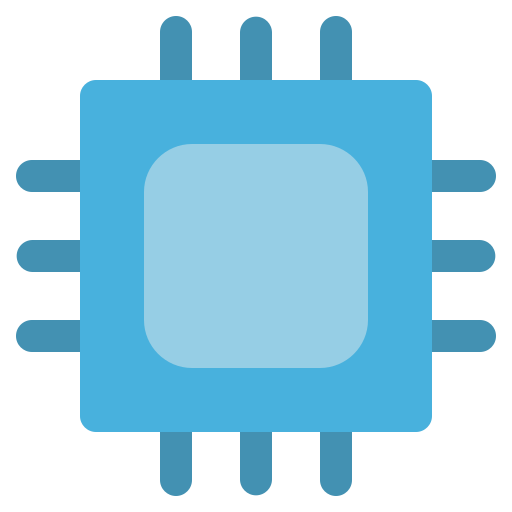My very first PC (though not my first computer) was a white box 386SX running at a lofty 16MHz with 4MB of RAM and a 40MB HDD. The motherboard (which I still have) from an unknown manufacturer.
That single computer spawned a hobby and an eventual 28-year career in IT hardware and operating systems.
Nah the i80386 was actually initially slower than the 80286, which was VERY disappointing, it was also expensive relative to performance.
The real change was the i486, which was way better and had integrated floating point, and a way more attractive starting price point especially considering the built in floating point.If they mean changing mainstream computing because it’s 32 bit, Motorola did that way earlier with the M68000. Available in Apple computers.
And Atari ST and Commodore Amiga and Sinclair QL.
Amiga 1000 is the best computer ever made! RIP Jack Tramiel.
Having a MMU was more revolutionary than integrated floating point.
I do think the 286 also had an MMU (and a surprising 1GB of virtual memory address space!)
However, entering and exiting protected mode (the mode where the MMU is useful) was painful on the 286, and I believe it slowed the adoption of those features. You had to reset the CPU to exit the mode!
The 386 was able to switch modes much easier (and added a virtual legacy 16 bit mode as well), allowing legacy software to be more easily integrated and runnable. Basically, I think it was successful because of “business reasons”, especially in the growing IBM PC compatible market. You could upgrade and still continue to run your legacy business software, but now with the ability to potentially run workstation/server level software as well.
But I’m probably biased because my first real computer was a 386 AT&T workstation with 4 megabytes of RAM, a real workhorse that I learned a lot on.
The main thing, as I understand it, is that the 386 supported preemptive multitasking, while the half-baked memory management in the 286 was only good enough to support cooperative multitasking. That was a big deal, and not just for business/workstation/server stuff.
My first computer was a 286, and while I don’t think I understood virtual memory at the time, I definitely remember it not being able to run a bunch of newer software (notably, Windows… 3.11?) because of fundamental incompatibility, not just lack of speed.
I think all the x86 processors support preemptive multitasking, but yes for sure you need a good MMU to really simplify things. The two almost always go hand in hand for good reason!
The memory management on the 286 was definitely buggier and “lesser” than on the 386, but as I understand it was more than sufficient to run a preemptive OS with virtual memory (Concurrent DOS 286 was just such an OS). The 286 just couldn’t run existing legacy 8086 software in this mode out of the box(only through a software emulation layer), so many people simply used it as a fast 8086 running MS-DOS/Windows.
The 386 fixed this by making it much easier/safer to use this legacy software in a protected mode environment, so something like Windows 3.x could run both DOS applications and it’s own native 16/32-bit ones at the same time. I’m honestly not sure why you couldn’t run Windows 3.11 on your 286, but I’m pretty sure it could be installed on one in standard mode. (I’ve read that some Compaq machines had an issue with that?) You would have only been able to run native 16-bit windows applications though, no DOS without resetting the system.
Again, I could be wrong (and would be curious to know if I am)! For context, I’ve worked as a firmware/BIOS engineer in the PC industry for 20 years, and spent most of my teenage years programming in assembly on those systems, and this is all from my direct experience with programming for such things. But also I’m old now and my brain don’t always work good…
The real change was the i486, which was way better and had integrated floating point
Not until later with the DX chips. You could also get a 386 with an integrated fpu.
EDIT:
The first i486 was with floating point, and it was faster than 80386 from the get go.
Later when the cut down SX that didn’t have floating point was introduced, they called the non cut down version DX.
But the original i486 was similar to later DX versions and included floating point.But admittedly the better prices for 486 was probably due to competition with AMD heating up.
Cheers to fellow old people in all the comments here!
Stay cool!
<3
I had an i286 and hunted all over for a math coprocessor. Not an easy task before the internet.
Only had an i386 very briefly. Upgraded to a Pentium 200Mhz, my first decent PC.
The oldest CPU that I remember using was an i486 running Windows 3.11. This was in 96 or so, I was allowed to fool around with an older desktop at one of my parent’s office (all the other computers had Pentiums and ran Windows 95).
I honestly probably did use an i386 during an (earlier) office visit, but I was too young too know anything about computers (I vaguely knew what a Pentium was when I was 8).
First CPU I recall was a 286 and my dad had set up some games in there to play including my favorite - Moonbugs. Unfortunately, the game timing was apparently coded to the CPU speed rather than the clock because when we upgraded to a 386 the game would run and end with GAME OVER in less than a second.
I had been excited about the new, faster computer until that discovery, lol.
Z80 for me, take that, ha!
6502 was my poison.
Mine too, just after Z80. Then 68000 (later plus add-on 286 board) and only after it was a pure 386.
We’d managed to snag a second-hand i186-based PC, with integrated green-and-black screen and two 5 1/4" floppy drives. Most useless excuse for a computer you ever did see; good luck trying to take notes with
edlinon DOS any faster than just writing them down. Super-futuristic looking, though - predated the iMac by over twenty years.Remember getting a ZX Spectrum for Xmas and being astonished that computers could actually display colour and play games. Z80 for the win.
Those were 80186? Cool, never saw one. I did some computing at school’s 8086 PC, though.
From my understanding, Z80 was already on the way out on desktop by the time I was born. 😆
I think the oldest I really used myself was the Apple II computers we’d use in computer class in elementary school, although I think they might’ve been a bit outdated since the Macintosh had already been out for five years when I started kindergarten. Our family’s first computer was a 286 compatible built by a guy at my dad’s job. It came with some version of DOS and Windows 3.1. I strongly suspect all of the software he delivered on it was warez.
I only started seeing Macs in the country I was living in at that time in the mid 2000s. And even then it was only very well off families (and this was by far the richest city in the country).
The Apple II was popular in schools and it seems Apple thought that getting into the education market would lead to home sales, but the lower cost of PC hardware and Microsoft’s success at business sales seemed to win out. We started using Macs when I got to fifth grade and sixth grade, but by eighth grade I was in a different school and we used Windows anytime we used a computer. It wasn’t until I went to university that I saw and used Macs again, since I was studying broadcast communication. The university was huge and had all sorts of options. Classrooms with computers would get whatever worked best for their usage but the open computer labs would have a mix of Windows, Macs, Red Hat Linux, and Sun Solaris. Everything ran Novell NetWare so it didn’t really matter what computer we used unless we needed software specific to an operating system, like Final Cut Pro.





